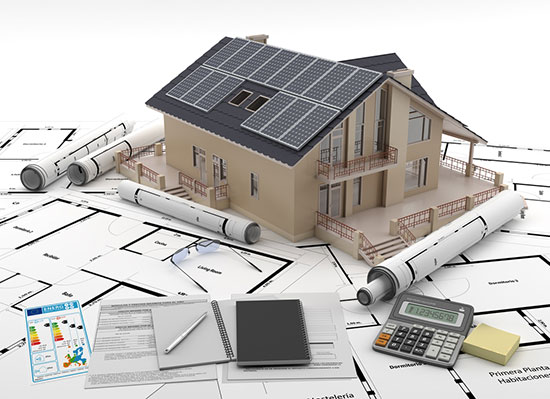The Need for Energy Efficient Houses

By Michael Tobias
Anyone selling a home in today’s market needs to do everything possible to make the property energy efficient. This is becoming even more important than other basic requirements which range from position and price, to curb appeal.
Not only will an energy-efficient home save the new owners money, but it will help them to meet the 2050 deadline to make all building net-zero carbon by 2050. It will also attract a higher price for the seller.
While not mandatory, the Net Zero Carbon Challenge is an initiative that is perhaps the only hope towards reducing demand for energy produced by damaging fossil fuels.
Understanding the Net Zero Carbon Challenge
A World Green Building Council (GBC) global project, Advancing Net Zero calls on everybody from governments, states, cities, and regions to businesses and individuals to take urgent action against climate change by decarbonizing the built environment.
Key principles are to:
- Measure and disclose carbon emissions from buildings so that carbon can be accurately tracked and the metered data used to calculate annual operational net-zero carbon emissions.
- Reduce the demand for energy and ensure buildings perform efficiently without wasting energy.
- Generate as much energy as possible from renewable energy sources, ideally on-site, but otherwise off-site or from offsets.
- Improve verification and rigor, and incorporate embodied carbon as well as other impact areas including water and waste.
The Net Zero Carbon Challenge goal is to have all new buildings operating at net zero carbon by 2030 and ALL buildings operating at net zero by 2050.
Countries worldwide have rallied to help make these deadlines a reality and ensure that all buildings, including houses, are as energy-efficient as possible. For example:
- In 2016, The French GBC, in collaboration with the Government, introduced a voluntary labeling system to ensure the construction industry would be part of the strategy to meet the challenges of climate change.
- In 2017, the U.S. GBC launched Pathway to Net Zero which provides educational resources to help practitioners (from New York architects to Chicago engineers) track carbon and work towards Net Zero Carbon Operations verification and achieve LEEDS credits.
- In 2017 Canada became the first GBC to introduce a dedicated Zero Carbon Building Standard that makes carbon emission the key indicator for building performance.
- The same year, Brazil’s GBC launched a Zero Energy Standard that offers certification for buildings that have operated with a net-zero energy balance for one year.
- Also in 2017, the Australian Federal Government introduced a National Carbon Offset Standard for precincts and buildings in collaboration with the Australian GBC. It utilizes established rating schemes, including Green Star, to demonstrate compliance and has strict requirements for achieving carbon neutrality.
- The South African GBC introduced a Net Zero Certification Program in 2017. This also addresses water and waste and recognizes buildings that positively redress or completely neutralize carbon emissions, solid waste to landfill, water consumption, and/or any other negative ecological impacts.
- In 2018 the German Sustainable Building Council published a framework for carbon-neutral buildings that is constantly being developed for rating new and existing buildings.
- Earlier this year (2019) the UK GBC introduced a definition for net carbon buildings in the UK. This provides a consistent approach for planning requirement, building rating tools, and voluntary reporting initiatives.
The challenge is that buildings are responsible for more than a third (around 39%) of carbon emissions related to global energy. About 11% come from construction and materials, and 28% from the energy used to power, heat, and cool buildings.
You may think your house is small fry in the scheme of things, but even the smallest commitment will help.
So what will make your house energy efficient?
Elements of Energy-Efficient Homes
While the design and style, and indeed cost, of energy-efficient houses varies tremendously, there are certain vital elements that they have in common. These include:
- The need for a tightly sealed thermal envelope that shields the indoor living space from the outside environment. It includes the walls and roof, windows, insulation, air and water vapor retarders, and weather-stripping.
- Controlled ventilation that prevents health risks from air pollution inside the house and reduces infiltration of moisture which minimizes the possibility of structural damage. It also promotes a more comfortable indoor environment.
- Well designed heating and cooling systems which are generally small. Professionals offering (heating, ventilation, and air-conditioning) HVAC engineering services in Chicago, New York, Atlanta, Los Angeles, Phoenix, or any other large city will base the design after careful consideration of the thermal envelope and its characteristics.
- The use of energy-efficient appliances, especially dishwashers, washing machines, dryers, refrigerators, and freezers. Check the Energy Guide label to ascertain how energy efficient the rating is. If you can, choose ENERGY STAR products. Environmentally friendly, they are independently certified for energy efficiency and will help you save money on energy bills.
- The need to use energy-efficient lighting which produces less heat and also helps reduce energy bills. Generally, fluorescent lighting is more eco-friendly than old-fashioned incandescent lighting. But the best way to save energy is to use LED and/or ENERGY STAR certified bulbs because they use up to 90% less energy than incandescent bulbs and they last longer. Since the lighting in an average home can use more energy than your refrigerator, laundry equipment, and dishwasher combined, it’s a no-brainer to switch.
If you’re buying a new home, consider buying one that is already zero energy ready. This is a Department of Energy (DOE) concept and one which will almost certainly qualify you for an energy-efficient mortgage (EEM) and increase your purchasing power. Alternatively, an EEM may be your answer to energy-efficiency home improvements.
ENERGY STAR together with the U.S. Environmental Protection Agency (EPA) has also developed specifications for Renewable Energy Ready Homes (RERH).
Another excellent option is to invest in an ENERGY STAR certified house that is built to a code that meets stringent requirements for complete thermal enclosure, heating and cooling, and water management systems, as well as energy-efficient lighting and appliances. Other typical energy-efficient features in ENERGY STAR certified homes include efficient walls and windows, air ducts, and equipment for heating and cooling.
While ENERGY STAR certified homes aren’t new – the program was launched in 1995 – the requirements of the program have continued to evolve in response to the need for homes to be energy efficient.
Whatever approach you take, just remember that energy savings start at home because we are all responsible for the planet.
BIO:

Michael Tobias is the founder and principal of New York Engineers, an Inc 5000 Fastest Growing Company in America. He leads a team of 30+ mechanical, electrical, plumbing, and fire protection engineers from the company headquarters in New York City, and has led more than 1,000 projects in New York, New Jersey, Chicago, Pennsylvania, Connecticut, Florida, Maryland, and California, as well as Singapore and Malaysia. He is passionate about sustainability and is a LEED AP.
